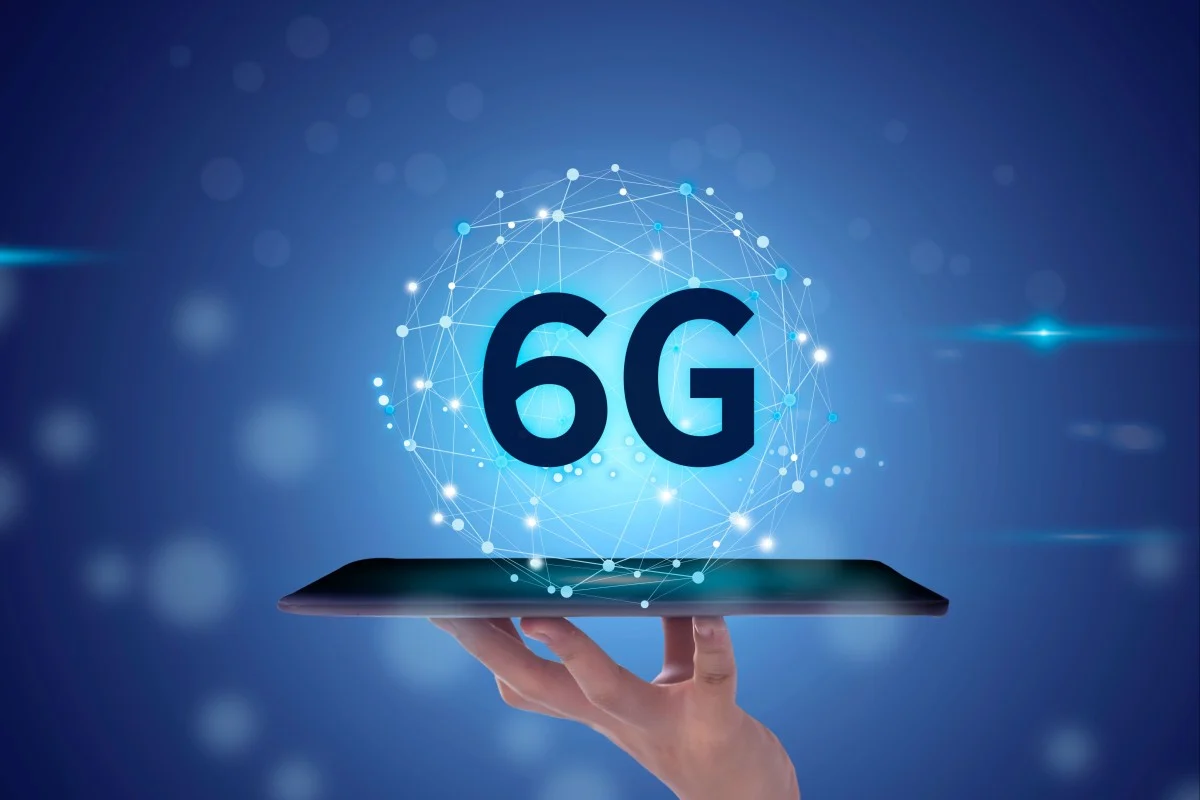The future of communication technology is on the verge of revolutionary change with the advent of 6G wireless technology. As the successor to 5G, 6G is expected to bring unprecedented changes, especially in the area of smart cities and the Internet of Things (IoT). This comprehensive guide highlights how 6G wireless technology will redefine urban living, connectivity, and technological innovation, setting the stage for a hyper-connected world.
Introduction to 6G Wireless Technology: The Next Frontier
6G wireless technology represents the sixth generation of wireless communication standards, which is projected to become a reality by the 2030s. This technology is set to surpass the capabilities of 5G by providing exceptional data speeds, ultra-low latency, and ubiquitous connectivity across all devices. These advancements will not only enhance existing technologies but also enable new applications that were previously unimaginable.
Evolution of Wireless Technology: From 1G to 6G
The journey of wireless technology began in the 1980s with 1G, which introduced analog voice communications. Next came 2G, which brought digital voice and basic data services. The 3G era marked the advent of the mobile internet, while 4G introduced high-speed data and enabled the rise of smartphones and mobile apps. 5G wireless technology further enhanced these capabilities with faster speeds and lower latency, paving the way for the connected world we live in today.
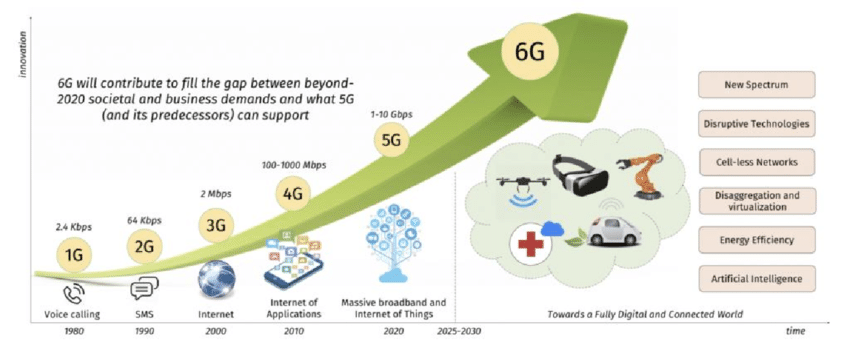
However, 6G wireless technology is expected to take this evolution to the next level by addressing the limitations of 5G and introducing new features that will transform the way we live, work, and interact with technology.
Key Features of 6G Wireless Technology
- Unprecedented Data Speeds: 6G is expected to offer data speeds of up to 1 terabit per second (Tbps), which is 100 times faster than 5G. This will enable seamless streaming of 8K and even 16K videos, as well as faster downloading of large files such as high-definition movies and video games.
- Ultra-low latency: One of the most significant improvements of 6G compared to its predecessors is its ultra-low latency, which is expected to be less than 1 millisecond. This will be crucial for applications that require real-time communication, such as autonomous vehicles, remote surgery, and industrial automation.
- Massive device connectivity: 6G will support a large number of connected devices, far beyond the capabilities of 5G. This will be essential for the growing number of IoT devices that are expected to be deployed in smart cities, homes, and industries.
- Integration with AI and machine learning: 6G networks will be designed with artificial intelligence (AI) and machine learning (ML) integration from the start. This will enable smarter and more efficient network management, data processing, and decision making.
- Advanced security and privacy features: As the number of connected devices increases, so does the risk of cyber threats. 6G is expected to include advanced encryption and security measures to protect data integrity, privacy, and the overall security of the network.
- Terahertz frequency band: 6G will likely operate in the terahertz frequency band, which will enable much higher data transfer rates and larger bandwidth. This will be critical to support the high data demands of applications such as augmented reality (AR), virtual reality (VR), and holographic communications.
The road to 6G: Research and development
The development of 6G wireless technology is still in its early stages, with research and standardization efforts underway around the world. Leading technology companies, research institutes, and governments are collaborating to define requirements, use cases, and technical specifications for 6G networks. Some of the key areas of research include:
- Terahertz communications: Researchers are exploring the use of the terahertz frequency band for 6G, which could provide the bandwidth and data transfer rates needed to support next-generation applications.
- AI and machine learning integration: The integration of AI and ML into 6G networks is a major focus of research, as it will enable more efficient network management, predictive maintenance, and real-time decision-making.
- Advanced modulation techniques: New modulation techniques are being developed to improve the efficiency and reliability of data transmission in 6G networks.
- Quantum communication: Quantum communication techniques are being explored as a potential solution to enhance the security and privacy of 6G networks.
- Energy efficiency: Researchers are also focusing on improving the energy efficiency of 6G networks, which will be critical to support the large number of connected devices expected in the future.
The Role of 6G Wireless Technology in Smart Cities
Smart cities are urban environments that leverage digital technology to improve the quality of life of their residents, increase the efficiency of city operations, and promote sustainability. 6G wireless technology will play a key role in the development and expansion of smart cities, enabling new applications and services that will transform urban life.
Enhancing Urban Connectivity
One of the most critical challenges facing smart cities is the need for reliable and high-speed connectivity to support the growing number of connected devices and services. 6G wireless technology will address this challenge by providing the bandwidth, speed, and reliability needed to support a wide range of applications, from smart transportation systems to energy management.
For example, traffic management systems in smart cities rely on real-time data from a variety of sources such as traffic cameras, sensors embedded in roads, and GPS data from vehicles. With 6G, these systems can analyze data almost instantly, making traffic flow more efficient, reducing congestion, and shortening emergency response times.
Smart Infrastructure and Predictive Maintenance
Infrastructure is the backbone of any smart city. With the advent of 6G wireless technology, infrastructure such as roads, bridges, and buildings will be equipped with sensors and IoT devices that constantly monitor their condition. This will allow for predictive maintenance, where potential problems can be identified and addressed before they become serious issues, reducing downtime and maintenance costs.
For example, sensors embedded in a bridge can monitor its structural integrity in real-time, detecting any signs of wear or damage. If a problem is found, maintenance crews can be dispatched immediately to resolve the issue, preventing a potential disaster.
Energy Management and Smart Grids
Energy management is a critical component of smart cities, and 6G wireless technology will enable the development of more efficient and sustainable energy systems. For example, smart grids can optimize energy delivery based on real-time demand, leading to significant energy savings and a reduced carbon footprint.
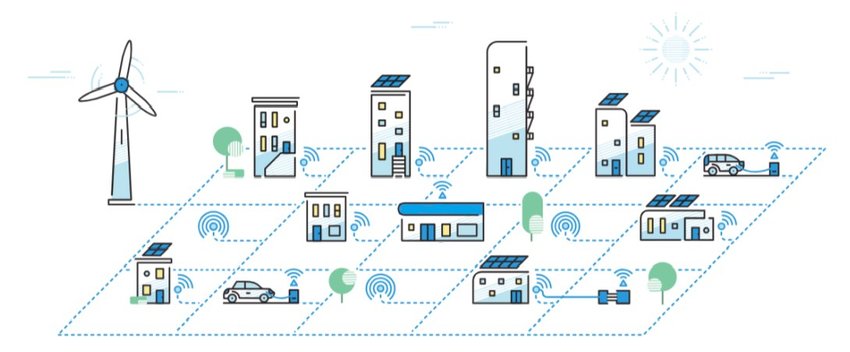
With 6G, energy providers can monitor and manage an entire city’s energy use in real-time, adjusting supply to meet demand and reduce waste. Additionally, 6G-enabled smart meters in homes and businesses can provide consumers with real-time data on their energy use, helping them make more informed decisions about their energy consumption.
Enhancing public safety and emergency services
Public safety is a top priority for any city, and smart cities are no exception. The ultra-low latency and high reliability of 6G wireless technology will enable real-time communication between emergency services, making quicker response times and more coordinated efforts possible.
For example, in the event of a natural disaster, sensors connected to a 6G network can instantly detect changes in environmental conditions, such as rising water levels or seismic activity. This data can be immediately transmitted to emergency services, allowing them to take proactive measures to protect citizens.
Environmental monitoring and sustainability
Climate change and environmental degradation are critical issues that smart cities must address. 6G wireless technology will enable the deployment of a vast network of environmental sensors throughout the city. These sensors can monitor air and water quality, noise levels, and other environmental factors in real time.
The data collected can be used to develop strategies to reduce pollution, conserve resources, and improve overall environmental quality. For example, if air quality sensors detect high levels of pollutants in a particular area, city officials can take immediate action, such as redirecting traffic or temporarily shutting down industrial activities.
Smart buildings and urban infrastructure
Smart buildings are an integral part of any smart city, and 6G wireless technology will enable them to be even more efficient and sustainable. With 6G, buildings can be equipped with advanced IoT systems that monitor and control various aspects of the building, such as energy use, lighting, heating, and security.
For example, a smart building can automatically adjust its energy use based on occupancy levels, weather conditions, and energy prices, leading to significant energy savings and reduced carbon emissions. Similarly, 6G-enabled security systems can detect and respond to potential threats in real-time, ensuring the safety of building occupants.
Autonomous transportation and mobility solutions
Autonomous vehicles are expected to play a key role in the future of smart cities, and 6G wireless technology will be a key enabler of this transformation. With ultra-low latency and high reliability, 6G will enable vehicles to communicate with each other and traffic management systems in real-time, leading to safer and more efficient transportation.
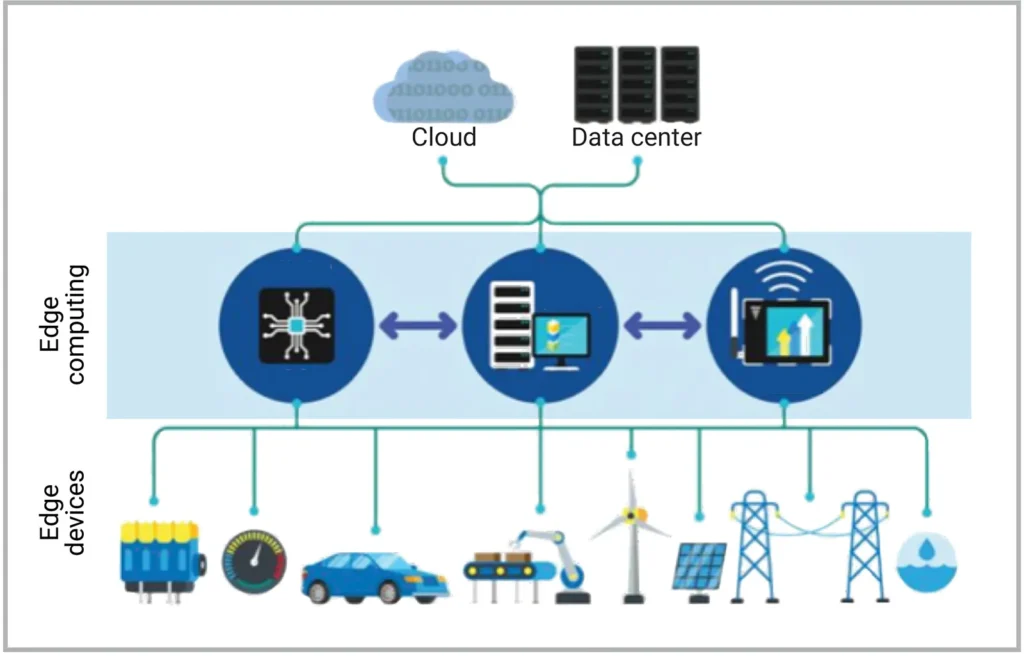
In smart cities, this will reduce the need for human drivers, leading to fewer accidents, lower emissions, and more efficient use of road infrastructure. Additionally, 6G will enable new forms of transportation, such as flying taxis and drone deliveries, that can operate autonomously and seamlessly in urban environments.
Smart waste management and resource optimization
Waste management is a significant challenge for urban areas, and 6G wireless technology will enable more efficient and sustainable waste management solutions. With 6G, waste collection and disposal systems can be equipped with IoT sensors that monitor waste levels in real-time.
For example, smart trash cans can alert waste management services when they are full, thereby reducing the need for regular collection schedules and reducing fuel consumption and emissions. Additionally, 6G-enabled recycling systems can automatically sort and process waste, leading to higher recycling rates and a lower environmental impact.
Impact of 6G wireless technology on IoT
The Internet of Things (IoT) refers to the network of physical devices connected to the Internet, which enables them to collect and exchange data. IoT is a critical component of smart cities, and the advent of 6G wireless technology will have a profound impact on how IoT devices work and interact with each other.
Massive IoT connectivity
One of the key features of 6G wireless technology is its ability to support massive connectivity. This means that billions of IoT devices can be connected simultaneously without compromising network performance. In smart cities, this will enable a wide range of applications, from smart homes and wearable devices to connected vehicles and industrial automation.
For example, in a smart home, various IoT devices such as thermostats, lighting systems and security cameras can communicate with each other and with the central control system in real time. With 6G, these devices can operate more efficiently, responding instantly to user commands and environmental changes.
Ultra-reliable low-latency communications (URLLC)
Low latency is critical for many IoT applications, especially those that require real-time communications, such as autonomous vehicles, remote healthcare and industrial automation. 6G wireless technology will provide ultra-reliable low-latency communications (URLLC), ensuring that data is transmitted and received with minimal delay.
In the context of smart cities, this means that autonomous vehicles can communicate with each other and with traffic management systems in real time, reducing the risk of accidents and improving traffic flow. Similarly, in industrial settings, machines can communicate with each other and with central control systems almost instantaneously, leading to more efficient and precise manufacturing processes.
AI-powered IoT and edge computing
Artificial intelligence (AI) will play a key role in the future of IoT, and 6G wireless technology will provide the necessary infrastructure for AI-powered IoT applications. With the integration of AI, IoT devices can become smarter, learn from data and make autonomous decisions without human intervention.
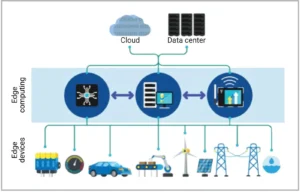
For example, in a smart city, AI-powered IoT devices can analyze data from various sources, such as traffic cameras, environmental sensors and social media, to predict trends and make recommendations. This could include adjusting traffic signals to reduce congestion, optimizing energy use based on weather patterns or even predicting and preventing crime.
Edge computing, where data processing takes place closer to the source of data generation rather than centralized data centers, will also be a key enabler of AI-powered IoT. 6G wireless technology will support the high-speed data transfer and low latency needed for edge computing, allowing IoT devices to process and analyze data locally, reducing the need to send data to the cloud.
Advanced Security and Privacy for IoT
As the number of connected devices grows, so does the need for stronger security measures. 6G wireless technology is expected to include advanced security features to protect IoT devices and data from cyber threats. This includes end-to-end encryption, secure authentication methods, and AI-powered security systems that can detect and respond to threats in real-time.
For smart cities, this means that sensitive data such as personal information and financial transactions will be protected from unauthorized access. Additionally, IoT devices themselves will be more secure, reducing the risk of hacking and other cyber attacks.
Energy Efficiency and Sustainable IoT Solutions
Energy efficiency is a key concern for IoT devices, especially for the large number of devices deployed in smart cities. 6G wireless technology will enable more energy-efficient communication protocols, reducing the power consumption of IoT devices and increasing their battery life.
In smart cities, this will lead to more sustainable IoT deployments, where devices can operate for longer periods without needing frequent battery replacement or recharging. This is especially important for IoT devices deployed in remote or inaccessible locations, such as environmental sensors or surveillance cameras.
IoT in Healthcare and Remote Monitoring
One of the most important areas where 6G wireless technology will impact IoT is healthcare. With the advent of 6G, remote healthcare services and telemedicine will become more advanced, allowing doctors to monitor patients’ health in real-time even from a distance.
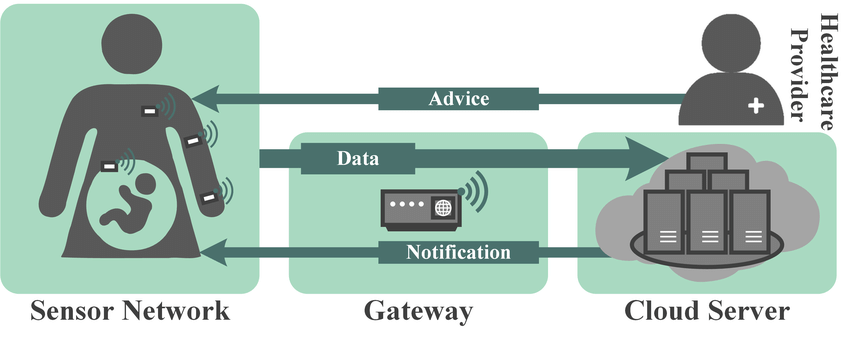
Wearable IoT devices can constantly monitor a patient’s vital signs, such as heart rate, blood pressure, and glucose levels, and transmit this data to healthcare providers in real-time. With 6G, this data can be analyzed instantly, allowing doctors to make informed decisions and perform timely interventions. Additionally, 6G will enable the development of more advanced medical devices, such as remote-controlled surgical robots and AI-powered diagnostic tools.
Industrial IoT and Smart Manufacturing
Industrial IoT (IIoT) is another area where 6G wireless technology will have a profound impact. With 6G, industrial facilities can be equipped with a vast network of connected sensors and devices that monitor and control various aspects of the manufacturing process in real-time.
For example, machines on a production line can communicate with each other and central control systems to optimize production, reduce downtime, and improve product quality. Additionally, 6G-enabled predictive maintenance systems can detect potential problems before they cause breakdowns, reducing the need for costly repairs and minimizing downtime.
Smart Agriculture and IoT
Agriculture is another industry that is set to benefit from the advancements brought about by 6G wireless technology. With the deployment of IoT devices in smart farming, farmers can monitor various aspects of their operations, such as soil moisture levels, crop health, and weather conditions, in real-time.
With 6G, these IoT devices can communicate with each other and central control systems to optimize irrigation, fertilization, and pest control, leading to higher crop yields and more efficient use of resources. Additionally, 6G-enabled drones can be used for tasks such as crop monitoring, spraying, and planting, further increasing the efficiency of farming operations.
Smart Retail and IoT
The retail industry is also expected to undergo significant changes with the introduction of 6G wireless technology. In smart cities, retail stores can be equipped with IoT devices that monitor inventory levels, customer behavior, and store conditions in real-time.
For example, smart shelves can detect when products are running low and automatically re-order them from suppliers, ensuring that the store is always well-stocked. Similarly, IoT devices can monitor customer traffic and preferences, allowing retailers to optimize store layouts, promotions, and product offerings. With 6G, these devices can operate more efficiently, providing retailers with real-time insights into their operations and helping them make more informed decisions.
The Future of Smart Cities and IoT with 6G Wireless Technology
The introduction of 6G wireless technology will usher in a new era in the development of smart cities and IoT. With its enhanced capabilities, 6G will enable many new applications and use cases that were not possible before. This will lead to smarter, more efficient, and more sustainable cities, where technology will be seamlessly integrated into every aspect of urban life.
The Role of AI and Machine Learning in 6G-Enabled Smart Cities
Artificial intelligence (AI) and machine learning (ML) will play a key role in the future of smart cities, and 6G wireless technology will provide the necessary infrastructure to support AI-powered applications. With 6G, AI can be integrated into various aspects of city operations, from traffic management and energy distribution to public safety and environmental monitoring.
For example, AI-powered traffic management systems can predict traffic patterns by analyzing real-time data from traffic cameras, sensors, and social media and adjust traffic signals accordingly. This can reduce congestion, improve traffic flow and reduce the environmental impact of transport. Similarly, AI-powered energy management systems can optimise energy distribution based on real-time demand and weather conditions, leading to significant energy savings and a lower carbon footprint.
6G and the Future of Autonomous Vehicles
Automated vehicles are expected to play a key role in the future of smart cities, and 6G wireless technology will be a key enabler of this transformation. With ultra-low latency and high reliability, 6G will enable vehicles to communicate with each other and traffic management systems in real-time, leading to safer and more efficient transport.
In smart cities, autonomous vehicles can reduce the need for human drivers, leading to fewer accidents, lower emissions and more efficient use of road infrastructure. Additionally, 6G will enable new forms of transport, such as flying taxis and drone deliveries, which can operate autonomously and seamlessly in urban environments.
The impact of 6G on smart energy grids
Energy management is a critical component of smart cities, and 6G wireless technology will enable the development of more efficient and sustainable energy systems. For example, smart grids can optimize energy delivery based on real-time demand, leading to significant energy savings and a lower carbon footprint.
With 6G, energy providers can monitor and manage an entire city’s energy use in real time, adjusting supply to meet demand and reduce waste. Additionally, 6G-enabled smart meters in homes and businesses can provide consumers with real-time data on their energy use, helping them make more informed decisions about their energy consumption.
6G and the future of smart buildings
Smart buildings are a key component of smart cities, and 6G wireless technology will enable them to operate more efficiently and sustainably. With 6G, buildings can be equipped with advanced IoT systems that monitor and control various aspects of the building, such as energy use, lighting, heating, and security.
For example, a smart building can automatically adjust its energy use based on occupancy levels, weather conditions, and energy prices, leading to significant energy savings and lower carbon emissions. Similarly, 6G-enabled security systems can detect and respond to potential threats in real-time, ensuring the safety of building occupants.
The Role of 6G in Smart Healthcare
One of the most important areas in which 6G wireless technology will impact smart cities is healthcare. In smart cities, 6G will enable the deployment of advanced telemedicine and remote healthcare services, where patients can receive medical care and monitoring from the comfort of their homes.
For example, wearable IoT devices can constantly monitor a patient’s vital signs, such as heart rate, blood pressure, and glucose levels, and send this data to healthcare providers in real-time. With 6G, this data can be analyzed instantly, allowing doctors to make informed decisions and provide timely interventions.
The Future of Public Safety with 6G
Public safety is a top priority for any city, and smart cities are no exception. The ultra-low latency and high reliability of 6G wireless technology will enable real-time communication between emergency services, making quicker response times and more coordinated efforts possible.
For example, in the event of a natural disaster, sensors connected to a 6G network can instantly detect changes in environmental conditions, such as rising water levels or seismic activity. This data can be immediately transmitted to emergency services, allowing them to take proactive measures to protect citizens.
Environmental Monitoring and Sustainability with 6G
Climate change and environmental degradation are critical issues that smart cities must address. 6G wireless technology will enable the deployment of a vast network of environmental sensors throughout the city. These sensors can monitor air and water quality, noise levels, and other environmental factors in real time.
The data collected can be used to develop strategies to reduce pollution, conserve resources, and improve overall environmental quality. For example, if air quality sensors detect high levels of pollutants in a particular area, city officials can take immediate action, such as redirecting traffic or temporarily shutting down industrial activities.
The Role of 6G in Smart Waste Management
Waste management is a significant challenge for urban areas, and 6G wireless technology will enable more efficient and sustainable waste management solutions. With 6G, waste collection and disposal systems can be equipped with IoT sensors that monitor waste levels in real time.
For example, smart waste bins can alert waste management services when they are full, thereby reducing the need for regular collection schedules and reducing fuel consumption and emissions. Additionally, 6G-enabled recycling systems can automatically sort and process waste, leading to higher recycling rates and a reduced environmental impact.
The Future of Smart Cities with 6G Wireless Technology
The introduction of 6G wireless technology will usher in a new era in the development of smart cities and IoT. With its enhanced capabilities, 6G will enable many new applications and use cases that were not possible before. This will lead to smarter, more efficient and more sustainable cities, where technology will be seamlessly integrated into every aspect of urban life.
Frequently Asked Questions
Q1. What is 6G wireless technology?
6G wireless technology is the next generation of wireless communication networks, expected to offer significantly faster data speeds, lower latency and more connectivity than 5G. It is still in the research and development phase, with widespread deployment expected by the 2030s.
Q2. How will 6G wireless technology impact smart cities?
6G wireless technology will enable smart cities to operate more efficiently by providing real-time data processing, improved connectivity, and advanced IoT integration. This will improve various aspects of urban life, including traffic management, public safety, energy use, and environmental monitoring.
Q3. What role will 6G wireless technology play in IoT?
6G wireless technology will support massive IoT connectivity, allowing billions of devices to connect simultaneously. It will also provide ultra-reliable low-latency communications (URLLC), which is essential for real-time IoT applications such as autonomous vehicles, remote healthcare, and industrial automation.
Q4. When will 6G wireless technology be available?
While 6G wireless technology is still in the early stages of development, it is expected to be commercially available by the 2030s. Researchers and industry leaders are already working on defining standards and requirements for 6G networks.
Q5. What are the benefits of 6G wireless technology for smart cities?
The benefits of 6G wireless technology for smart cities include increased connectivity, real-time data processing, improved public safety, more efficient energy management, and better environmental monitoring. These advancements will lead to smarter, more sustainable, and more livable cities.
Conclusion
6G wireless technology is set to revolutionise smart cities and IoT, bringing new levels of connectivity, efficiency and sustainability. As cities become more connected and technology-dependent, the need for faster, more reliable and more secure communication networks will only grow. 6G wireless technology will provide the foundation for this future, allowing smart cities and IoT to reach their full potential. Discover more valuable insights and tools by visiting our MyTechAngle and explore all that we offer.
